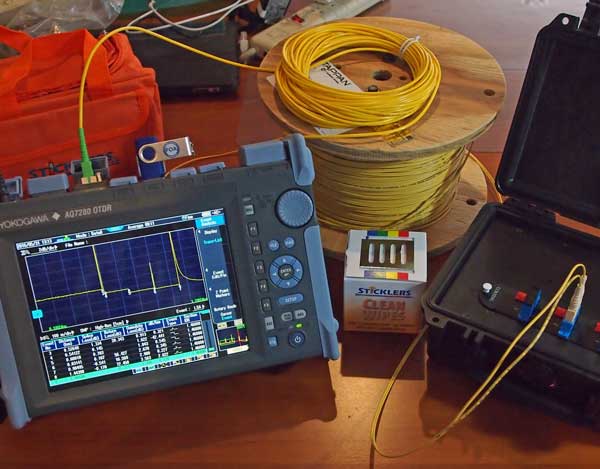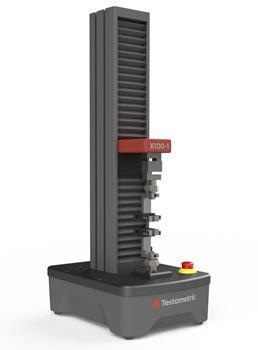A Comprehensive Guide to Optical Measurement System for Fiber Analysis
When it concerns fiber evaluation, comprehending optical measurement systems is crucial for assessing efficiency and guaranteeing top quality. You'll discover crucial strategies like interferometry and spectroscopy, which aid you gauge vital specifications. There's more to it than just these approaches; understanding attenuation dimension methods can substantially influence your network's performance. As you browse through this overview, you'll uncover insights that can transform your approach to fiber optics.
Understanding Optical Measurement Solutions
When you explore optical measurement systems, you'll uncover they're crucial for analyzing fibers with accuracy. These systems use light to analyze numerous attributes of fibers, consisting of diameter, refractive index, and harmony. By utilizing strategies like interferometry and spectroscopy, you can get valuable insights right into the fiber's properties.You'll discover that these systems are developed to lessen mistakes and improve precision, making certain dependable data for your analysis. Various setups, such as single-mode and multi-mode systems, accommodate particular fiber types, enabling you to pick the most effective fit for your needs.Moreover, the integration of sophisticated software tools aids you analyze the data efficiently, making it less complicated to recognize any kind of variances or defects. As you explore deeper into these measurement systems, you'll appreciate exactly how they improve the logical process and boost the overall quality of fiber manufacturing and testing.
Secret Parameters for Fiber Evaluation
Key criteria for fiber analysis play an important duty in figuring out the quality and efficiency of optical fibers. When you examine a fiber, you'll intend to concentrate on attributes such as depletion, bandwidth, and modal diffusion. Depletion determines the loss of signal toughness as light travels via the fiber. A lower depletion worth suggests far better high quality and longer transmission distances - fibre testing equipment.Bandwidth describes the data-carrying capacity of the fiber and is crucial for high-speed communication. You'll require to assess the bandwidth to assure it meets your application demands. Modal diffusion, which arises from the different speeds at which light trips via various modes in multimode fibers, impacts signal quality
Techniques for Attenuation Measurement

Data transfer and Its Influence On Performance
Recognizing bandwidth is crucial for enhancing fiber efficiency, as it directly affects the amount of information that can be sent over a network. Higher transmission capacity implies you can send out more info simultaneously, enabling for faster communication and much better total performance. When you're dealing with optical fibers, it's crucial to think about exactly how transmission capacity communicates with fiber attributes, such as core dimension and material properties.If the data transfer is restricted, you might experience data loss or slower speeds, influencing your applications. Additionally, different sorts of fibers can sustain varying data transfer degrees, so it is very important to choose the best fiber for your certain needs.You need to also keep in mind that environmental aspects, like temperature level and external interference, can affect data transfer. By comprehending these facets, you can make enlightened choices to enhance your fiber optic systems, making sure trustworthy and reliable information transmission.
Refractive Index Measurement Approaches

Overall Inner Representation
Total inner reflection (TIR) works as an essential principle for gauging the refractive index of fibers. When light travels from a denser tool to a less thick one, it can only be totally reflected if the angle of occurrence exceeds a details threshold, recognized as the vital angle. This phenomenon enables you to determine the refractive index by examining the angles at which light mirrors or refracts. By utilizing an arrangement that directs light right into a fiber and measures the resulting angles, you can determine the refractive index properly. Understanding TIR not just boosts your fiber analysis yet also enhances the layout and performance of optical systems. Leveraging TIR can lead to more effective fiber-based applications.
Interferometric Methods
Structure on the concepts of complete inner representation, interferometric techniques supply a powerful means for determining the refractive index of fibers with high precision. These techniques make use of the interference patterns produced when beams split and recombine after taking a trip different paths. You can utilize configurations like the Michelson or Mach-Zehnder interferometer to examine phase shifts brought on by modifications in refractive index. By thoroughly calibrating your system and evaluating the resulting fringes, you can identify the refractive index with amazing accuracy. It's important to maintain stable environmental problems to decrease mistakes. With these methods, you'll enhance your understanding of fiber buildings, bring about much better performance in various applications, from telecoms to sensing unit innovation.
Modal Dispersion and Its Significance
Modal diffusion describes the spreading of light pulses as they take a trip via a fiber, which can affect the general performance of the system. You'll see that this sensation can cause indicate distortion, affecting information transmission prices and high quality. Understanding its value is crucial for enhancing fiber optic designs.
Interpretation of Modal Diffusion
In optical fiber interactions, modal diffusion plays a significant duty in figuring out signal quality and transmission rate. It happens when various light modes travel at differing speeds via the fiber. Because each setting has unique courses and attributes, they can arrive at the obtaining end at different times. This moment difference can lead to indicate dispersing and distortion, which can break down the overall efficiency of the interaction system. You may run into modal dispersion largely in multimode fibers, where the several courses of light intensify the concern. Understanding modal diffusion is important for optimizing fiber styles and guaranteeing go that your interaction systems run efficiently, keeping the honesty of the transmitted signals over longer distances.
Effects on Fiber Performance
Recognizing modal diffusion helps highlight its impacts on fiber efficiency. This sensation occurs when different settings of light traveling at varying speeds within the fiber, leading to signify dispersing in time. As you examine optical fibers, you'll notice that enhanced modal diffusion can substantially weaken signal top quality, resulting in decreased data transfer and longer transmission ranges. In sensible terms, this implies your data can arrive altered or delayed, impacting overall communication effectiveness. To alleviate these impacts, you could take into consideration making use of single-mode fibers, which minimize modal dispersion. By choosing the right fiber type and understanding how modal dispersion influences performance, you can enhance transmission quality and guarantee reputable data transfer in your optical measurement systems.
Tools and Technologies for Optical Measurements
When review it comes to optical measurements, several cutting-edge devices and modern technologies go to your disposal to improve fiber analysis. You'll find fiber optic testers, which assess signal quality and efficiency, crucial for keeping suitable network performance. Optical time-domain reflectometers (OTDRs) are important for finding faults and measuring loss over ranges, supplying in-depth insights right into fiber honesty. Furthermore, spectrometers can evaluate light spectra, aiding you determine material buildings and composition.Don' t ignore the significance of imaging systems, like electronic microscopic lens, that enable you to aesthetically check fiber surfaces for issues. Additionally, think about making use of polarization analyzers to determine stress and pressure in fibers, which is crucial for recognizing their behavior under various problems. By leveraging these tools and modern technologies, you can substantially enhance your fiber analysis processes, guaranteeing reliability and high efficiency in your optical networks.
Frequently Asked Questions
What Are the Costs Related To Optical Measurement Equipments?
The costs related to optical dimension systems can vary greatly. You'll require to evaluate equipment prices, upkeep fees, software application licenses, and potential training expenditures. Budgeting carefully will aid you stay clear of unforeseen monetary difficulties down the line.

Just How Typically Should Fiber Analysis Be Done?
You need to execute fiber evaluation consistently, typically every 6 months or after substantial adjustments in the atmosphere (optical fibre diameter analyzer). This assures suitable efficiency and assists identify potential concerns before they influence your system's efficiency and integrity
Can Optical Measurement Equipments Be Calibrated at Home?
Yes, you can calibrate optical dimension systems in your home, but it calls for precision. Make certain you adhere to the producer's guidelines, make use of proper calibration standards, and ascertain your results to guarantee precision in your dimensions.
What Industries Commonly Make Use Of Optical Measurement Equipments?
You'll locate optical dimension systems extensively made use of in sectors like telecommunications, production, health care, and research. They're vital for high quality control, fiber evaluation, and making certain accurate dimensions in different applications, improving performance and accuracy across sectors.
Are There Any Kind Of Safety And Security Worry About Optical Measurement Systems?
Yes, there are safety concerns with optical dimension systems. You need to constantly put on protective eyewear to shield your eyes from intense lights and warranty appropriate training to take care of devices safely and avoid crashes.
Comments on “The science behind fiber strength and durability through fiber measurement”